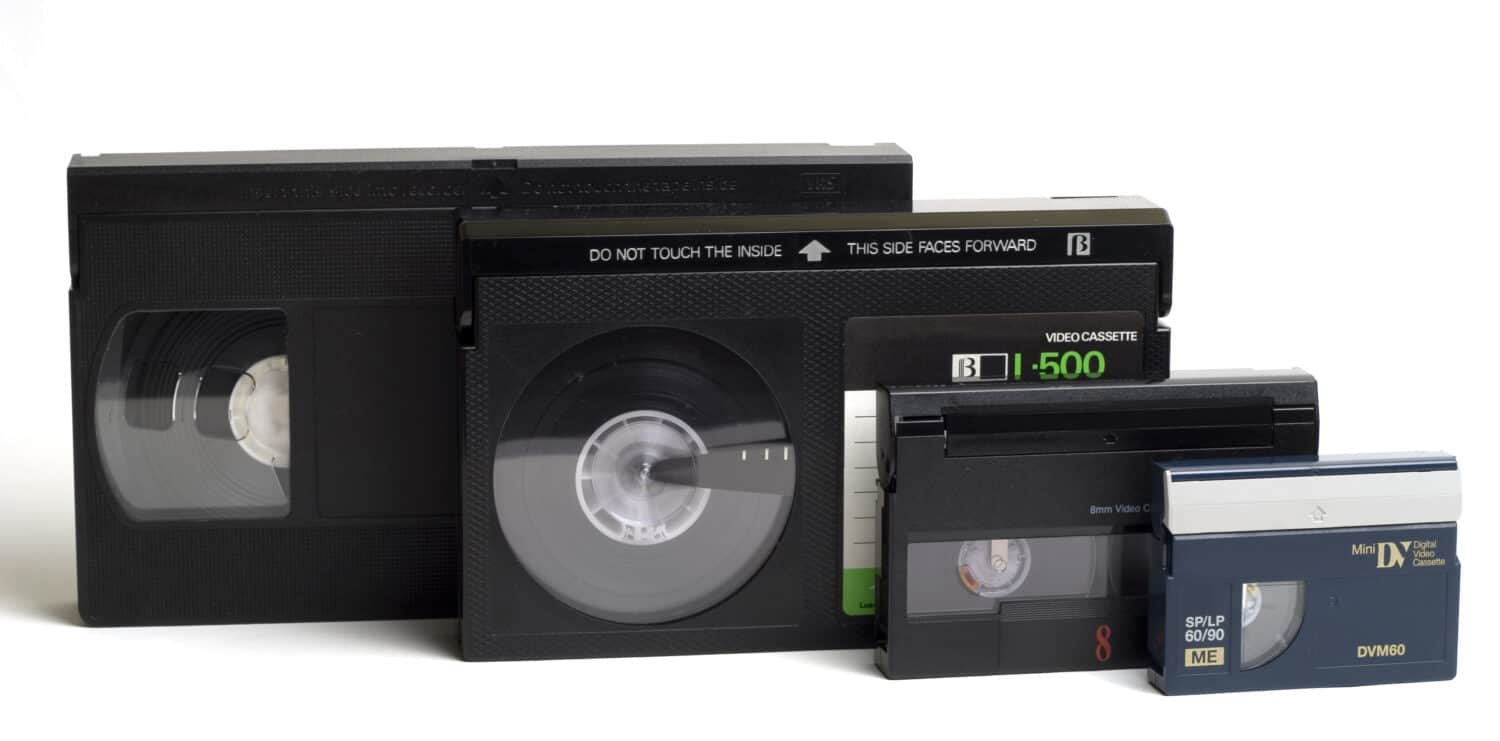There are countless obsolete formats littered throughout tech history. For every success story like the CD, you’ve got failures like the Minidisc. So, why not take a look back at some of these dud formats? We’re taking another stroll through history, but this time we’ll look at why these failed.
U-Matic
The U-Matic is an oddity. At first blush, you’d be convinced this crawled out of the 1980s. However, this video cassette precedes the humble VHS by five years. Introduced in 1971 by Sony, the U-Matic had all the earmarks for success. Home movies weren’t quite a market in the early 1970s, however.
Much like Betamax, the U-Matic would be resigned to broadcast. VHS ended up being the dominant format for home video. As with many of the items covered, it is just another of the obsolete formats left in the annals of tech history.
The Data Cassette
When we look back at computer storage, we often think of things like floppy disks or CD drives. However, early home computers were a bit of an unexplored territory. Now, data has been stored on tapes for decades at this point.
When I did some of my technical training one of the first things we learned was long-term backups using reel-to-reel tapes. Despite tapes being an obsolete format these days, they are alive and well.
As such, the Data Cassette used by the Commodore 64 and ZX Spectrum had some tried and tested territory. However, when you look at raw stats, it isn’t a surprise why this never took off. Cassettes are slower than anything when it comes to data transfers. At the end of the day, the floppy disk was just better.
Video CD
The older readers in the audience might remember the likes of the Laserdisc. If you were around in the 2000s, you likely remember things like DivX players. However, the Video CD is one of those obsolete formats consigned to the cutting room floor of technological progress.
The Video CD at first glance offered a superior experience to the still-dominant VHS format of the time. However, the late 90s and early 00s saw the rise of the DVD. By 2003, you were hard-pressed to find someone who preferred Video CDs. Suffice it to say, this one was the right idea at the wrong time.
Capacitance Electronic Disc
It is shocking to think anyone was working on home video discs in the 1960s. However, tech giant RCA was hard at work with the Capacitance Electronic Disc. The CED was an interesting format, operating more like a record player for videos rather than anything resembling a DVD.
Interestingly, it was only introduced to the public in 1981. Now, I don’t need to tell you why this was a poor idea. The VHS was alive and in full swing. Add in the increased wear and fragile medium, and the CED wasn’t going anywhere anytime soon.
CYCLADES
We often look at ARPANET as the common ancestor of the internet. Originally developed by ARPA, it serves as the backbone of many modern network conventions, including my beloved TCP/IP protocol. However, it wasn’t the only computer network around.
CYCLADES was a French development for networked communication between terminals that started in the 1970s. Interestingly, many of the modern technological developments we associate with networks like packet switching and internetworking were pioneered by CYCLADES. That wasn’t enough to stop it from going offline in 1981, however.
Betamax

Closing out our list is probably my favorite oddity when it comes to obsolete formats. The Betamax was originally launched in 1975, and pioneered by Sony once again. On paper, this format was a winner. It offered better video quality, high-frequency audio content, and global broadcast standards. While it was the first to market compared to the VHS, it still lost out.
What led to Betamax’s failure simply comes down to cost and storage. Betamax tapes could only hold around 60 minutes of video. Add in the expensive player and tapes, and you’ve got a recipe for disaster.
The image featured at the top of this post is ©Leo/Shutterstock.com.

